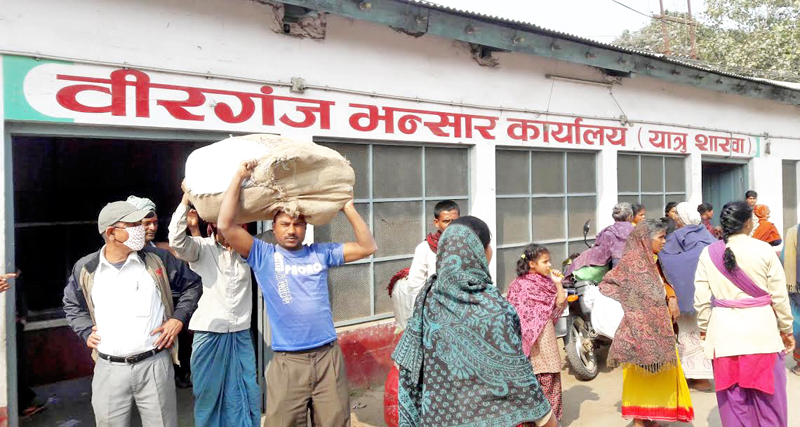Trade deficit balloons to Rs 398.76 billion
Kathmandu, January 9
The country’s trade deficit widened to Rs 398.76 billion in the first five months of the ongoing fiscal, as the import bill of the country surged by 13 per cent to reach Rs 432.48 billion, whereas exports slowed to a crawl.
According to data unveiled by the Department of Customs, the country exported goods worth Rs 33.72 billion in the first five months of the current fiscal, which is slightly better compared to Rs 30.61 billion in the corresponding period of the previous fiscal.
The country’s trade deficit has been ballooning every passing year. The trade deficit of the first five months of this fiscal is more than the total annual import bill of the country eight years ago.
Comparative figures
2009-10 (annual)
2017-18 (first five months)
Export
Rs 59.39bn
Rs 33.72bn
Import
Rs 368.38bn
Rs 432.48bn
Trade deficit
Rs 308.99bn
Rs 398.76bn
According to DoC, in fiscal 2009-10, the total annual import was worth Rs 368.38 billion.
In the review period, the country imported petroleum products worth Rs 61.20 billion, iron and steel worth Rs 43.09 billion, machinery parts worth Rs 40.95 billion, vehicles worth Rs 35.56 billion and electric equipment worth Rs 29.66 billion, according to DoC.
The major export commodities were coffee and tea (worth Rs 3.71 billion), products made of staple fibres (Rs 3.19 billion), carpets (Rs 2.97 billion), apparels — ready-made garments (Rs 2.84 billion) — and iron/steel (Rs 1.96 billion).
A majority of imports and exports took place with India, with the share of imports and exports with the southern neighbour in the review period standing at 65.3 per cent and 53.8 per cent, respectively. Other major trading partners were China, the United States of America, Germany, Thailand, Turkey and Argentina.
Experts have said that Nepal’s energy shortfall is the major reason behind the trade deficit as the import bill of petroleum products surged by 55 per cent to Rs 61.20 billion in the first five months of this fiscal compared to Rs 39.45 billion in the corresponding period of the previous fiscal.
Moreover, Nepal is importing around 372 megawatts of electricity from India, which is not included in the goods trade. Nepal’s electricity import bill from India is around Rs 15 billion per annum, according to Nepal Electricity Authority.
“Increasing dependence on fossil fuel and lack of electricity are the major constraints in boosting production in the country,” said Yubraj Khatiwada, former vice chairman of the National Planning Commission.
“Apart from tapping into our hydro resources, we should also explore the potential of solar and wind energy for localised generation from the perspective of energy security as well as to unleash industrialisation possibilities.”
Trade economist Posh Raj Pandey opined that Nepal should review the policy, which has pegged Nepali rupee with the Indian currency that has been in place since 1993. “It’s high time we reconsider the correct anchor to boost production in Nepal,” said Pandey. “Unless we review the exchange rate, Nepal’s dependency with India will remain longer.”
Cheaper import from India has been distorting the production base in Nepal, he said. For example, if a commodity used to cost $30 in Bangkok in 1993, it was cheaper for Nepal to import the product from Thailand. However, appreciation of the currency in other countries gradually resulted in Nepal’s import being concentrated on India because import from India became cheaper due to the fixed exchange rate regime. Meanwhile, as inflation in Nepal is higher than in India, Nepali products could not be competitive for export to the Indian market. “Fixed exchange rate is the major challenge in diversifying Nepal’s trade,” he added.






